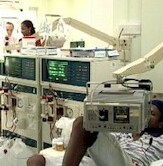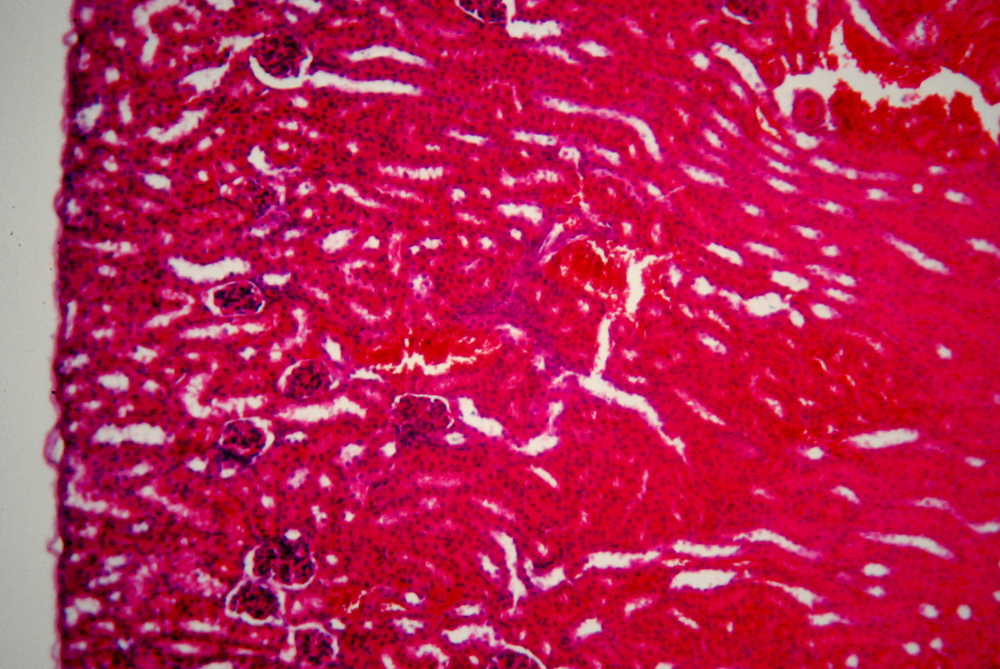
WEDNESDAY, Jan. 26 (HealthDay News) — Replacing the commonly used blood-thinner heparin with a clot-dissolving stroke drug in dialysis catheters once a week may reduce the incidence of catheter malfunctions and infections, according to new research.
Recombinant tissue plasminogen activator (rt-PA) is a medication normally used to break up stroke-causing clots in the brain. However, when researchers used this drug in dialysis catheters instead of heparin after one of three dialysis sessions a week, the rate of catheter malfunction dropped from 35 percent to 20 percent. In addition, the infection rate was 4.5 percent in the group that received rt-PA compared to 13 percent for the group treated only with heparin.
“With rt-PA we could reduce the rates of catheter malfunction by about 50 percent and infections by almost two-thirds,” said the study’s lead author, Dr. Brenda Hemmelgarn, an associate professor of medicine at the University of Calgary in Alberta, Canada.
Results of the study are published in the Jan. 27 issue of the New England Journal of Medicine, and funding for the study was provided by Hoffmann-La Roche, a manufacturer of rt-PA.
Central venous catheters are used in dialysis to draw the blood out, and then to return it to the body after it has been cleansed by the dialysis machine. Catheters are the fastest method for allowing vascular access, but they have a higher risk of complications (such as infection and hospitalization) than other access methods, according to an accompanying editorial in the journal.
Because of time constraints, most people undergoing hemodialysis have catheters, according to background information in the article. And, about half of those catheters stop working within a year, often because of blood clots, said Hemmelgarn. Or an infection may occur, and serious catheter-related infections are one of the most common causes of death for people undergoing dialysis, the authors said.
Most people on dialysis get treatments three times a week. After each treatment, the catheter is “locked” with a solution, usually of heparin and saline.
But in this study, the researchers replaced heparin with rt-PA after one of the three dialysis sessions for randomly selected patients from a group of 225 long-term dialysis patients. One hundred and fifteen people were assigned to heparin locks, while 110 received a once-a-week rt-PA lock along with two standard heparin locks. The treatment period lasted six months.
Catheter malfunctions occurred in 40 of the 115 patients (34.8 percent) receiving heparin only, but in just 22 of 110 (20 percent) of those getting rt-PA, according to the study. And, the rate of infection was significantly less too, with just five patients (4.5 percent) in the rt-PA group experiencing a serious infection versus 15 (13 percent) of those in the heparin-only group.
“I think rt-PA is able to break up small clots and prevent bigger clots, which prevents the catheter from getting blocked,” said Hemmelgarn. Also, without tiny blood clots in the catheter, bacteria doesn’t have a good place to congregate either, she added.
“We’re now able to use medication as prevention, and we can prevent these complications from developing in the first place,” she said.
One drawback to rt-PA is the price. In Canada, she said the monthly cost of heparin for a dialysis patient is about $156 per patient. But, a weekly dose of rt-PA costs about $582 a month. However, she noted that rt-PA may end up being more cost-effective in the long run if it prevents complications.
Another concern with the use of rt-PA is the risk of excessive bleeding. In the current study, the researchers found similar rates of bleeding between the heparin-only group and the rt-PA group.
Asked about the study, Dr. Robert Provenzano, chief of nephrology at St. John Providence Health System in Detroit, said that an increased risk of bleeding is definitely a concern, as is the cost of rt-PA. He said other cheaper drugs are available for catheter solutions.
He also noted that the study authors screened more than 2,300 people, but only selected 225 for the study, suggesting that the results may apply only to certain dialysis patients.
Still, he said, “This drug appears to do two things: decrease infections by almost half and most importantly, it preserves the catheters. There’s a cost and morbidity associated with having to change catheters. This is a very small study, but it appears to work,” said Provenzano.
More Information
Learn more about dialysis from the U.S. National Institute of Diabetes and Digestive and Kidney Diseases.

